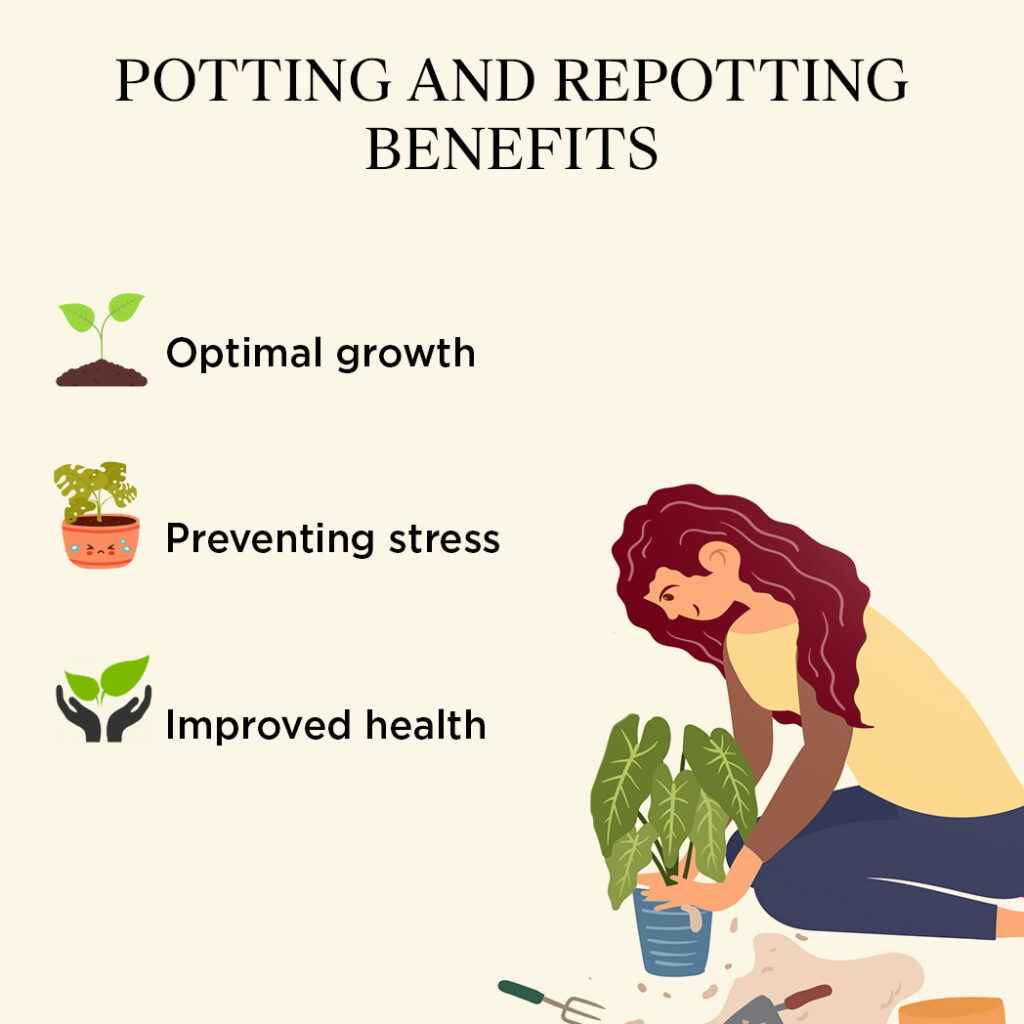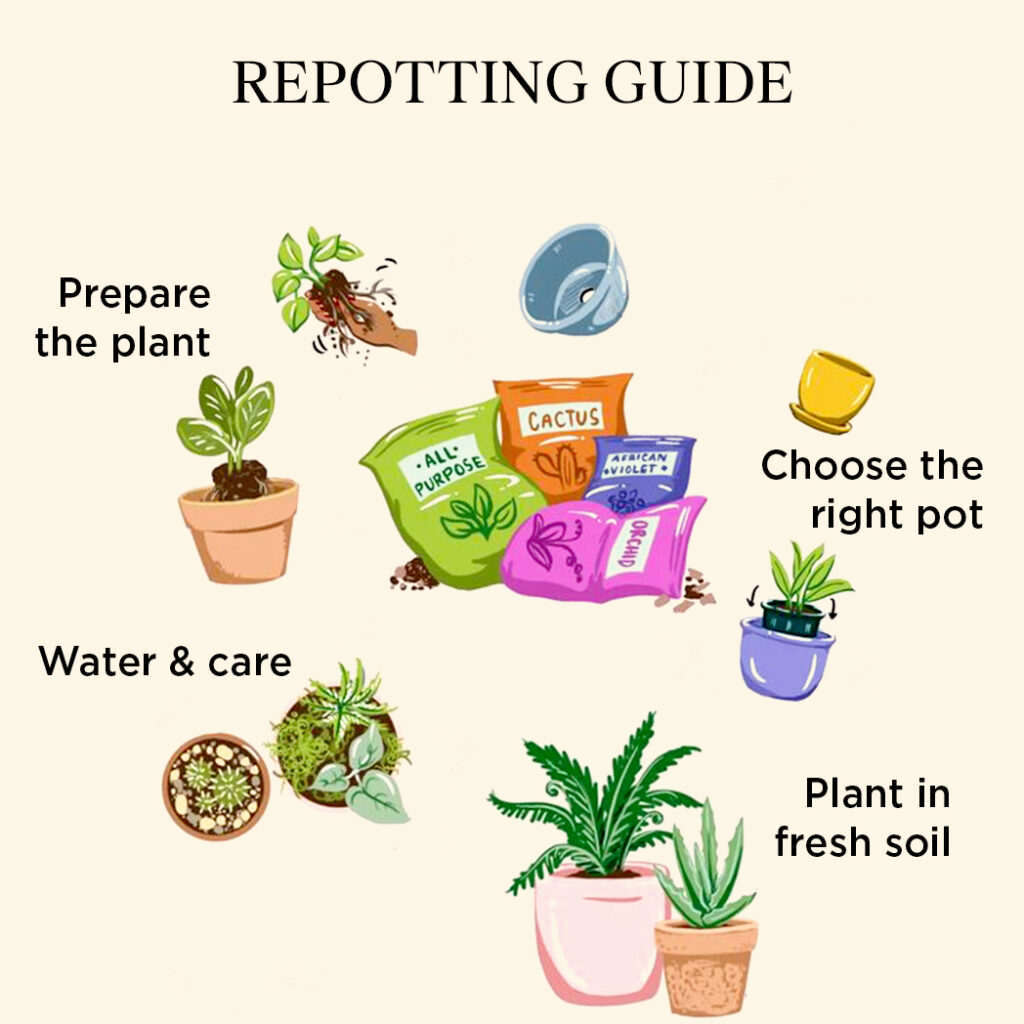
– Anonymous
Potting and repotting is the process of planting or transferring plants into pots that provide them the optimal space and nutrients for healthy development. This process can be looked at as a plant’s makeover. When you first pot a plant it is vital that it is the right size for these seedlings. As they grow, transplanting seedlings need more space to grow and thus it is necessary to transport them to more spacious pots. Also, plants use up nutrients in their soil over time and repotting also allows you to replace old and depleted soil with fresh and nutritious soil.

Advantages of Potting and Repotting
Optimal Growth – By providing the plants with ample room for their roots, it ensures that the plants can grow to their full potential. In a limited container, the roots can become root-bound, circling around the pot and restricting the plant’s growth. Transferring the plant to a larger pot (can refer to the Pots & Size chapter if needed) during repotting allows the roots to spread out, promoting optimal nutrient absorption and overall plant development.
Improved Health – Fresh soil means access to more nutrients, leading to healthier and happier plants. This is like providing a balanced diet to your plants. Furthermore, as the plant is transferred to new, disease-free soil, the risk of pathogens affecting its health is minimized. Additionally, removing old and decomposed root matter during repotting reduces the chances of root diseases and encourages a healthier root system.
Preventing Stress – Repotting prevents plants from feeling cramped and stressed. Over time, the soil in a pot can become compacted, reducing the availability of oxygen to the roots. Repotting involves loosening the soil and providing aeration to the roots. Well-aerated roots can take in oxygen more efficiently, contributing to the overall health and vigour of the plant.

Now that we have established the importance of potting and repotting, it is vital to carry it out the right way. As per the Centurion University*, here is a simple guide you can follow to provide your plants the perfect makeover:
Choose the Right Pot:
Drainage is Key: Ensure that the chosen pot has drainage holes to prevent waterlogging. Good drainage is crucial for preventing root diseases and ensuring that excess water can escape, preventing soil saturation.
Prepare the Plant:
Inspect and Trim Roots: Inspect the roots for any signs of rot or diseases. Trim away any dead or rotting roots using clean, sharp scissors or pruning shears. Healthy roots are typically white or light-coloured.
Soil Renewal: Remove the old soil from the root ball, shaking it gently to dislodge excess soil. This helps in providing a fresh start for the plant in its new container.
Plant in Fresh Soil
Proper Plant Placement: Position the plant in the centre of the new pot at the same depth it was in the old pot. Add fresh soil around the sides until the roots are covered and the plant is secure.
Water and Care
Post-Repotting Care: Place the newly potted plant in a shaded area initially to reduce stress. Avoid exposing it to direct sunlight for a few days. Provide regular, but not excessive, watering in the following weeks, allowing the plant to adjust to its new environment.
Monitor for Signs of Stress: Keep an eye on your plant for any signs of stress, such as wilting or yellowing leaves. Adjust watering and placement accordingly.
Potting and repotting play a crucial role in a plant’s life, akin to a rejuvenating makeover. Initially, a plant needs the right size pot to accommodate its growth. As it thrives, transplanting becomes necessary for more spacious accommodation and nutrient-rich soil.




